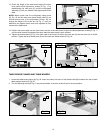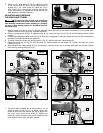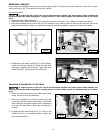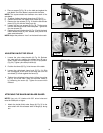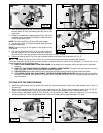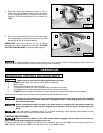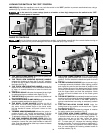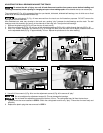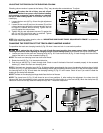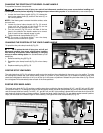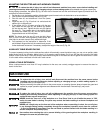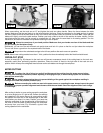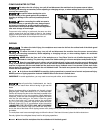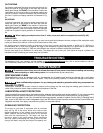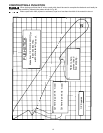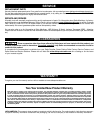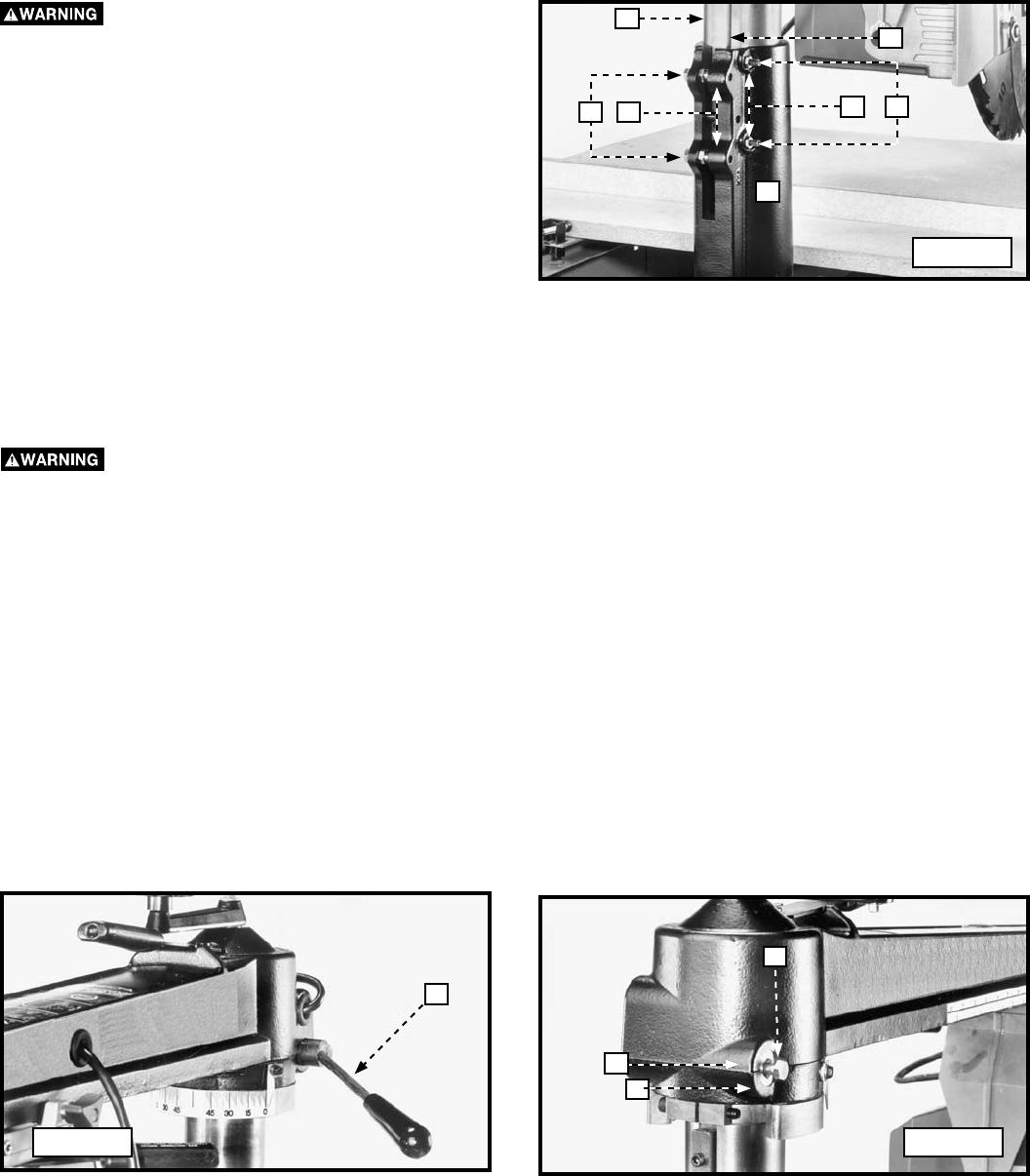
21
ADJUSTING THE TENSION ON THE ELEVATING COLUMN
Elevating column tension is preset at the factory. “Play” may develop after extended use. To adjust:
Fig. 49
B
H
A
F
D
E
C
NOTE: After adjusting column tension, refer to “ADJUSTING SAW BLADE TRAVEL SQUARE WITH FENCE” to determine
if saw blade travel was affected.
A
Fig. 50
D
C
B
Fig. 51
1. Loosen the hex nuts (A) Fig. 49 and the gib adjustment
screws (C).
2. Loosen the hex nuts (D) and turn the screws (E) until the
column base wraps around the column securely and can
be raised or lowered without binding. Tighten the hex
nuts (D) against the column base.
3. Tighten the gib and adjustment screws (C) against the
gib (H) until all side-to-side play is removed. Tighten
the hex nuts (A) against column base.
To reduce the risk of injury, turn unit off and
disconnect machine from power source before installing
and removing accessories, before adjusting or changing
set-ups or when making repairs. An accidental start-up can
cause injury.
CHANGING THE POSITION OF THE TRACK ARM CLAMPING HANDLE
To reposition the track arm clamping handle (A) Fig. 50 when it does not lock in a convenient position:
To reduce the risk of injury, turn unit off and disconnect machine from power source before installing and
removing accessories, before adjusting or changing set-ups or when making repairs. An accidental start-up can cause injury.
1. Loosen and remove the track arm clamping lever (A) Fig. 50. Push the hex bolt (B) Fig. 51 back through the hole until the
head of the bolt is out of the recessed bushing (C).
NOTE: The track arm clamping lever has a left-hand thread.
2. Rotate hex bolt (B) Fig. 51 in the desired direction.
3. Push the hex bolt (B) Fig. 51 back through hole. Check to see if the head of hex bolt is seated properly in the recessed
bushing (C). Attach the track arm clamping lever.
NOTE: If the track arm clamping lever (A) Fig. 49 tightens before approximately four turns, the clamping bushings (one of which
is shown at (C) Fig. 51 may have rotated. These bushings should seat completely inside the track (D). If they do not, slightly loosen
the clamping lever (A) Fig. 50 and rotate the clamping bushing (C) Fig. 51 until it seats. Check to see if you need to rotate the
bushing on the clamp lever side also.
NOTE: The flats on the clamping bushings should face the front of the saw.
NOTE: The clamp lever (A) Fig. 50 will thread at one of two positions. If, after making the adjustment, the clamp lever (A)
tightens 180° from where desired, slowly unscrew clamp lever (A) while holding in on the hex bolt (B). When the clamp lever (A)
comes off of the hex bolt (B), rotate the clamp lever (A) 180°. Thread the clamp lever.



